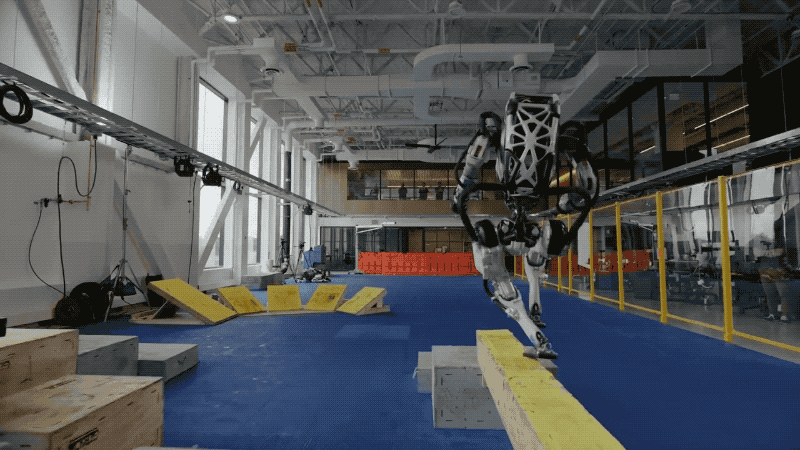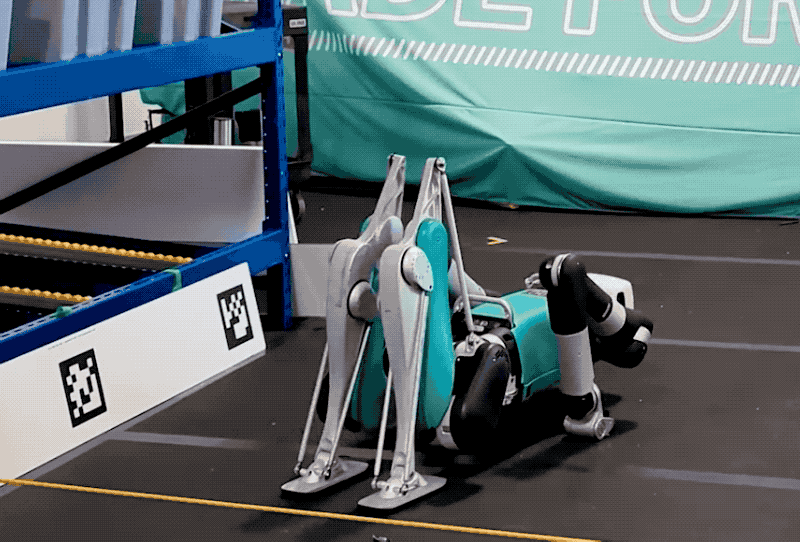Skilled entrepreneurs Boston Dynamics launched two main robotics information cycles final week. The bigger of the 2, naturally, was electrical Atlas announcement. As I write this, the lower than 40-second video is slowly approaching 5 million views. A day earlier, the corporate tugged on the group’s heartstrings by saying that the unique hydraulic Atlas put out to pastureten years after its look.
The accompanying video was a celebration of outdated Atlas’s journey from a DARPA analysis mission to an impressively agile bipedal “bot.” Nonetheless, after a minute the tone adjustments. Finally, Farewell to Atlas is as a lot a blunder as it’s a celebration. It is a welcome reminder that each time a robotic lands on video, there are dozens of slips, falls and journeys.

Picture credit: Boston Dynamics
I have been an advocate for this sort of transparency for a very long time. I might prefer to see extra issues like this on the earth of robotics. Merely displaying the highlights negates the hassle that went into creating these photographs. In lots of instances, it is a matter of years of trial and error spent making robots look good on digicam. If you solely share optimistic outcomes, you set unrealistic expectations. Bipedal robots fall. No less than on this respect they’re the identical as us. Like agility I put in this just lately“Everybody falls generally, it’s how we rise that defines us.” I might go additional by including that it’s equally vital to learn to fall nicely.
The corporate’s newly appointed CTO Pras Velagapudi just lately informed me that seeing robots fail at this stage is definitely a very good factor. “When a robotic is definitely out on the earth and doing actual issues, surprising issues can occur,” he notes. “You may see a number of falls, however that is a part of having the ability to run for a really very long time in actual circumstances. It is anticipated, and it is a signal that you just’re not faking it.”
A Temporary Description of Harvard Guidelines for a fall with out harm displays what we intuitively perceive about falling as people:
- Handle your head
- Use your weight to information your fall
- Bend your knees
- Do not take different folks with you
As for robots, that is A part of final 12 months’s IEEE Spectrum it is a great spot to begin.
“We’re not afraid of falling—we do not deal with robots as if they will break on a regular basis,” Boston Dynamics chief know-how officer Aaron Saunders informed the publication final 12 months. “Our robotic crashes typically, and one of many issues we determined a very long time in the past. [is] that we have to construct robots that may fall with out breaking. For those who can undergo this cycle of pushing your robotic to failure, studying what’s incorrect, and fixing it, you may make progress the place it would not fail. However for those who construct a machine, or a management system, or a tradition primarily based on the ideas of by no means falling, you’ll by no means be taught what it’s worthwhile to be taught to maintain your robotic from falling. We have fun falls, even these falls that break the robotic.”

Picture credit: Boston Dynamics
The subject of fall additionally got here up after I spoke with Boston Dynamics CEO Robert Plater forward of the launch of the electrical Atlas. It’s noteworthy that the quick video begins with the robotic in a inclined place. The best way the robotic’s legs bend is totally new, permitting the system to face up from a totally horizontal place. At first look, the corporate seems to be displaying off, utilizing this flashy transfer merely as a method to showcase its extraordinarily dependable customized drives.
“This may have very sensible makes use of,” Plater informed me. “The robots will fall. You higher be capable to stand up from a mendacity place.” He provides that having the ability to stand up from a mendacity place may also be helpful for train.
Most of Boston Dynamics’ data about falling got here from Spot. Whereas there tends to be extra stability within the quadruped kind issue (as evidenced by many years of attempting and failing to knock down robots on video), Spot’s robots merely spend many extra hours in the actual world.

Picture credit: Dexterity Robotics
“Spot travels about 70,000 km a 12 months on the manufacturing facility ground, performing about 100,000 inspections monthly,” provides Plater. “Ultimately they fall. You need to be capable to stand again up. I hope you decelerate the speed of fall – we succeeded. I feel we fall each 100-200 km. The speed of decline has certainly grow to be sluggish, however it’s taking place.”
Playter provides that the corporate has an extended historical past of being “tough” with its robots. “They fall and they should survive. The fingers can’t fall off.”
Wanting on the above passages from the Atlas, it’s tough to not mission somewhat human sympathy onto the “bot”. He truly seems to fall like a human, holding his limbs as near his physique as attainable to guard them from additional harm.
When Agility added weapons to Digit again in 2019, there was some dialogue in regards to the function they performed in crashing. “For us, arms are each a instrument for transferring via the world (consider getting up after a fall, swinging your arms for stability, or opening a door) and in addition helpful for manipulating or carrying objects,” co-founder Jonathan Hurst then seen.
I talked to Agility a bit about this matter on the Modex convention earlier this 12 months. A video of a Digit robotic falling onto a convention room a 12 months earlier made the rounds on social media. “With a 99% success fee over about 20 hours of dwell demos, Digit nonetheless failed on ProMat a number of occasions,” Agility famous on the time. “We do not have proof, however we expect our gross sales crew set this up so they might discuss Digit’s quick-change limbs and sturdiness.”
As with the Atlas video, the corporate informed me that one thing just like the fetal place is helpful by way of defending the robotic’s legs and arms.
The corporate makes use of reinforcement studying to assist fallen robots get again on their toes on their very own. Within the video above, Agility disabled Digit’s potential to dodge obstacles to make him fall. Within the video, the robotic makes use of its arms to melt the autumn as a lot as attainable. He then makes use of this reinforcement studying to return to a well-recognized place from which he can rise up once more by performing a robotic push-up.
One of many principal benefits of humanoid robots is their potential to suit into present work processes—these factories and warehouses are referred to as “brownfields,” which means they weren’t designed particularly for automation. In lots of present manufacturing automation functions, errors imply that the system truly shuts down earlier than human intervention.
“Rescuing a humanoid robotic wouldn’t be a trivial activity,” Plater says, noting that these methods are heavy and tough to repair manually. “How are you going to do it if he can’t get off the bottom?”
If these methods are actually going to offer uninterrupted automation, they should take a very good fall and get again on their toes.
“Each time Digit crashes, we be taught one thing new,” provides Velagapudi. “On the subject of bipedal robotics, falling is a superb instructor.”
